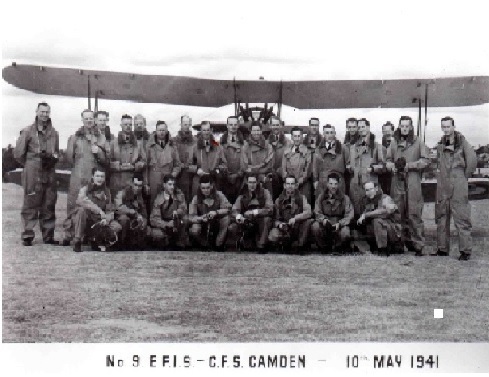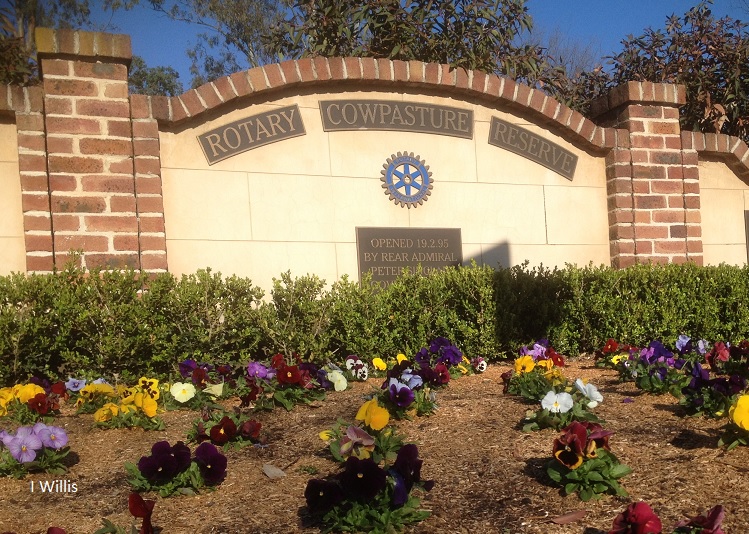A prominent building
The former Foresters’ Hall occupies one of the most prominent sites in the Camden Town Centre at 147 Argyle Street on the corner of Oxley Street and Argyle Street. On its opening in 1908, the hall was considered the best in New South Wales by the Order of Royal Foresters.
The Royal Foresters was a friendly society at a time long before governments provided welfare benefits, and workers who became sick or injured had bleak prospects. British immigrants brought the idea of friendly societies with them and created branches of large English societies in Australia. Workers who joined friendly societies and paid a fortnightly contribution were provided health and sickness benefits for themselves and their families.
The Morning Glory No 504 of the Order of Royal Foresters was formed in Camden in 1874. The Order of Royal Foresters was a friendly society that originated in England in 1834 and offered members savings plans, health and sickness insurance, and gave sponsorships and grants to community organisations. In 1921 the Camden Royal Foresters merged with the Manchester Unity Independent Order of Oddfellows. (Mylrea, 2008; Camden News, 14 December 1922)
Purchase of the building site
The Royal Foresters purchased the hall site, with frontages on Argyle Street and Oxley Street, in 1907 for £483. (Mylrea, 2008) The purchase of the hall site was guaranteed by three Royal Foresters’ trustees, HJ Huntley, Stephen Kelloway, and WF Peters. Huntley and Kelloway were part of the Camden Methodist community, who exercised power and influence well beyond their numbers in the local area.
WF Peters ran a local business as an undertaker, timber merchant and stonemason at 42 Argyle Street as WF Peters & Son, a brickyard at 24 Edward Street, and a branch of the business at Auburn. (SMH, 25 June 1928) He was briefly mayor in 1917, alderman for several years, captain of the Camden town fire brigade, committeeman with the AH&I Society and Camden District Hospital board member. (Camden News, 28 June 1928; Wrigley, 1990) Stephen Kelloway was a local dairy farmer, and HJ Huntley was a local painting contractor who served a term on Camden Municipal Council. (Camden News, 14 December 1922)
An impressive building
The hall was an impressive addition to Camden’s built heritage and cost a substantial amount of money. The hall was designed by local builder WC Furner and constructed by WF Peter. (Camden News, 4 June 1908)
WC Furner, Methodist, was a larger-than-life figure and carried on a business as a timber merchant, ironmonger, and hardware outlet. (CN, 9 March 1939) He served as mayor from 1896 to 1899 and as an alderman on Camden Municipal Council from 1892 to 1905. He was a local magistrate, justice-of-the-peace and coroner (1890-1917), vice-president of the Camden AH&I Society, and president of Camden Hospital Board from 1911 to 1913. His building firm constructed some of Camden’s most notable landmarks, including CBC Bank, police barracks, Dr Crookston’s house, and Hilsyde at Elderslie. (Wrigley, 1983; Wrigley, 1990)

The best in News South Wales
The Camden News described the hall as a ‘magnificent and substantial building’, and a male-only banquet for over 100 was held for the official opening on Wednesday, 27 May 1908, with the Foresters in their regalia adding a ‘becoming tone’. (Camden News, 4 June 1908) The women were relegated to cooking with catering provided by Mrs WH McDonald and the hall ‘tastefully decorated’ by Mrs Woodhill and Mrs Coleman. (Camden News, 4 June 1908)
Speeches followed, and SCR (Sub Chief Ranger) Brother H Hedger officially declared the hall open and stated it l ‘was the best building in connection with their Order in the State’. He said ‘nothing had been stinted to make this building up to date’ and emphatically stated that the hall was ‘the finest friendly society’s hall in NSW’. He said that the hall ‘was admirably located for the convenience of the Shire and other councils’ for community use. (Camden News, 4 June 1908)
Brother Hedger spoke of the work of Royal Foresters. He boasted that no other friendly society in New South Wales did more to alleviate ‘distress’ and paid over £1,100 yearly for ‘medical fees and expenses’ for members. (Camden News, 4 June 1908)
There was much applause, and the reply was taken by Camden’s Brother E O’Farrell, 80 years old, who was a foundation member of the Court in Camden in 1874. Toasts to the King and others followed.
In the evening, the festivities continued with a social where over 250 people danced to Beverley’s band with a piano, cornet, and violin line-up. (Camden News, 4 June 1908)

The building design
The Camden Heritage Inventory describes the building as a ‘two-storey adapted Federation brick building (of Federation style origins) with parapet roof. Double hung windows with timber shutters.’(Camden Heritage Inventory)
The upstairs part of the building had a supper room described as ‘a perfect room for socials and meetings, well fitted with two fireplaces, windows, and doors leading onto a large balcony commanding a splendid view of the town.’ (CN, 4 June 1908)
There was an ‘admiral stage and dressing rooms’ all lit by acetylene gas, as town gas had yet to be installed in the Camden town area. Plumber W Wilkinson of Camden constructed the acetylene plant. (Camden News, 4 June 1908)
In 1908 acetylene light was considered a modern and cost-effective way to light public spaces. The Kalgoorlie Miner reported that Coolgardie Municipal Council had installed the acetylene system to light the council offices and town hall. The press story compared the cost with electric lighting and reported favourably on the running costs of acetylene. The Coolgardie town hall supplied ‘soft light’ with 74 lights and was well suited to theatrical performances where light could be turned off and ‘instantaneously lit again’. (Kalgoorlie Miner, 5 June 1909)
Many occupants
Over the decades, the hall has had a variety of occupants and has been repurposed several times.
There were retail premises on the hall’s Argyle Street from 1908.
The building frontage was modified in 1914 when the building served as a movie palace that celebrated the arrival of modernism in the town. The Camden Star Pictures, operated by Pinkerton & Fox (Fuchs) ran a movie theatre from 1914 to 1921. Pinkerton sold out in 1921 to PJ Fox for £2150 and renamed it Empire Pictures (1921-1933). (Mylrea, 2007; Mylrea, 2008)
In 1936 Camden Municipal Council ordered the removal of verandah posts and the balcony from the Empire Theatre. (Camden News, 15 October 1936) From 1938 the Empire Sports Club ran a billiard saloon on the upper-level access by the stairs in Oxley Street. (Mylrea, 2008)
During WW2, soldier support services ran the ACF-YMCA Hospitality Centre in the building from 1944 to 1946 and purchased the equipment from the Sports Club. Lots of Camden’s women, young and old, volunteered to entertain the troops from the Narellan Military Camp. (Willis, 2004)
In the post-war years, the Sydney-based firm Fostars Shoe Factory Pty Ltd occupied the auditorium as part of post-war reconstruction from 1947 to 1958. (The District Reporter, 1 May 2020)

In the following years, the building was primarily used as commercial premises. In 1960 the building was sold to Downes Stores (Camden) Pty Ltd for £10,000, then in 1985, the premises was purchased by B Rixon for £420,000. He operated Southern Radio and Piano Agency, known as Southern Radio (trading as Retravision), from 1985 to 2007. Most recently, the building has been occupied by Treasures on Argyle charity shop (2008-present). (Mylrea, 2008)

References
PJ Mylrea, 2007, ‘The Birth, Growth and Demise of Picture Theatres in Camden’. Camden History, Journal of the Camden Historical Society, March 2007, Vol 2, No 3, pp. 52-59.
PJ Mylrea, 2008, ‘The Centenary of the Royal Foresters’ Hall’. Camden History, Journal of the Camden Historical Society, September 2008, Vol 2, No 6, pp.204-213.
John Wrigley, 1990, Camden Characters. Camden Historical Society, Camden.
John Wrigley, 1983, Historic Buildings of Camden. Camden Historical Society, Camden.
Ian Willis, 2004, The women’s voluntary services, a study of war and volunteering in Camden, 1939-1945, PhD thesis, School of History and Politics, University of Wollongong. http://ro.uow.edu.au/theses/168
Updated 27 July 2023. Originally posted 11 February 2023 as ‘A marvellous Edwardian building’.








































![Camden Community Gardens[1]](https://camdenhistorynotes.files.wordpress.com/2018/03/camden-community-gardens1.jpg)









You must be logged in to post a comment.